Forums
- Forums
- Duggy's Reference Hangar
- USAAF / USN Library
- Grumman F11F-1/F-11A TIGER
Grumman F11F-1/F-11A TIGER
Post a reply
- Go to Previous topic
- Go to Next topic
- Go to Welcome
- Go to Introduce Yourself
- Go to General Discussion
- Go to Screenshots, Images and Videos
- Go to Off topic
- Go to Works in Progress
- Go to Skinning Tips / Tutorials
- Go to Skin Requests
- Go to IJAAF Library
- Go to Luftwaffe Library
- Go to RAF Library
- Go to USAAF / USN Library
- Go to Misc Library
- Go to The Ops Room
- Go to Made in Germany
- Go to Campaigns and Missions
- Go to Works in Progress
- Go to Juri's Air-Raid Shelter
- Go to Campaigns and Missions
- Go to Works in Progress
- Go to Skinpacks
- Go to External Projects Discussion
- Go to Books & Resources
-
8 years agoSat Feb 03 2024, 11:43amDuggy
 Main AdminAlthough it was destined to have only a short service life with the US Navy and never fired a shot in anger, the Grumman F11F-1 (F-11) Tiger carrier-based single-seat fighter achieved a degree of fame as the mount of the Blue Angels flight demonstration team, thrilling millions at air shows during the late 1950s and all throughout the 'Sixties.
Main AdminAlthough it was destined to have only a short service life with the US Navy and never fired a shot in anger, the Grumman F11F-1 (F-11) Tiger carrier-based single-seat fighter achieved a degree of fame as the mount of the Blue Angels flight demonstration team, thrilling millions at air shows during the late 1950s and all throughout the 'Sixties.
The Grumman F11F (F-11) Tiger had its origin in a 1952 company-funded study to explore the possibility of adapting the basic F9F-6/7 Cougar design to the provisions of the Area Rule, thus reducing transonic drag and enabling the aircraft to achieve a supersonic performance. The project was given the company designation of G-98.
It soon became obvious that more than just a simple redesign of the Cougar would be needed, and by the spring of 1953, the G-98 had evolved into a completely different aircraft that bore no resemblance to the Cougar. The aircraft now had a cylindrically-shaped fuselage with a narrow-chord, mid-mounted sweptback wing with a relatively thin airfoil section. The fuselage was markedly narrowed in width at the position of the wings, in accordance with the provisions of the Area Rule.
The engine of the G-98 was to be the Wright J65, which was a license-built version of the Armstrong Siddeley Sapphire. The engine was to be fed by a pair of air intakes mounted on the fuselage sides just aft of the cockpit. The pilot's cockpit was located well forward on the nose, and was covered by a rearward-sliding canopy. A sharp, downward-sloping pointed nose accorded good forward visibility, which was essential for safe landings aboard aircraft carriers. The undercarriage consisted of twin nosewheels which retracted rearward into the forward fuselage and single mainwheels which retracted into wells in the main fuselage. A retractable tailskid was provided for protection against damage to the rear fuselage in case of inadvertent nose-up landings.
Instead of using the standard wing construction technique with thin sheet aluminum riveted to a series of ribs, the main box skins were milled from single light-alloy slabs and integral stiffeners were incorporated to reduce weight. The wings had leading-edge slats and full-span trailing-edge flaps. Lateral control was provided by full-span spoilers which were mounted near the wing trailing edge just ahead of the flaps. An airflow fence was fitted to the upper surface of each wing at about 1/3 span. The wingtips were manually folded downward for stowage aboard carriers.
There was a single triangular-shaped vertical tail. The all-flying horizontal tailplane was mounted low on the rear fuselage.
The Navy Bureau of Aeronautics was sufficiently impressed with the G-98 proposal that on April 27, 1953 they ordered two flying prototypes (BuNo 138604 and 138605) plus a static-test airframe (BuNo 138603). Even though the G-98 now bore no relationship whatsoever to the F9F-6/F9F-7 Cougar, the Navy assigned the designation XF9F-8 to the project. Four months later, the Navy changed its mind and reassigned the XF9F-8 designation to the G-99 project, which WAS a straightforward derivative of the basic F9F-6/F9F-7 Cougar, and redesignated the new G-98 as XF9F-9, which confused just about everyone.
Tests were carried out with a rocket-launched scale model and with a small model mounted on the nose boom of a F9F-6 Cougar. The Navy now felt sufficiently confident to order 42 service test and initial production aircraft (Bu Nos 138606/138647).
Work on the XF9F-9 proceeded rapidly and the first flying prototype was available in July of 1954. However, the afterburning J65 engine was still not available, and a non-afterburning Wright J65-W-7 turbojet rated at 7500 lb.s.t. was fitted for the initial trials. XF9F-9 BuNo 138604 took to the air for the first time on July 30, 1954, test pilot Corwin "Corky" Meyer being at the controls. In spite of the use of the non-afterburning engine, the aircraft almost achieved Mach 1 on its first flight, which further increased the Navy's confidence in the design. The second prototype (BuNo 138605) took to the air for the first time on October 2, 1954.
On October 20, 1954, XF9F-9 BuNo 138604 crashed at the edge of a wooded area near the Grumman Calverton facility on Long Island following an engine flameout. The pilot, LtCdr W. H. Livingston, survived the crash, but the aircraft was too heavily damaged to be repaired. The second XF9F-9 prototype (BuNo 138605) was moved to Edwards AFB in California in search of better flying weather. Once at Edwards, 138605 was fitted with an afterburner and was finally able to achieve supersonic performance in level flight. However, the XF9F-9 (in contradiction to some sources) was not the FIRST Navy fighter to achieve this feat, that honor belonging to the Douglas F4D-1 Skyray which first went supersonic in level flight in June of 1954.
Flight testing at Edwards AFB did turn up some control and stability problems which needed fixing before the aircraft could be declared ready for service. These modifications were incorporated in BuNo 138606, which flew for the first time on December 15, 1954. It had redesigned vertical tail surfaces with a narrower chord rudder, a boundary layer splitter plate for the air intakes, a clear sliding canopy to improve rearward visibility, and a slightly longer nose. By then, an additional 388 production fighter aircraft had been ordered (BuNos 141728/141980, 143232/143366) and 85 reconnaissance versions (BuNos 140379,140413, 141981/142009, and 143367/143387), and these modifications were to be incorporated. The production aircraft were to be powered by the Wright J65-W-18 turbojet, rated at 7400 lb.s.t. dry and 10,500 lb.s.t. with afterburning. Armament was to be four 20-mm cannon mounted in the lower edges of the air intakes. In addition, four Sidewinder infrared-homing air-to-air missiles or two Sidewinders and two 150-US gallon drop tanks could be carried on underwing racks. In accordance with the new Navy requirement for inflight refuelling capability in all its combat aircraft, a partially-retractable refuelling probe was added in the nose.
In April of 1955, the Navy finally admitted that the Tiger was not an upgraded Cougar, and ordered that the aircraft be redesignated F11F-1 (the designation F10F had been taken by the Jaguar variable-sweep fighter). This redesignation covered BuNos 138605/138608 which had already flown, and subsequent production aircraft were redesignated before their completion. The three batches of reconnaissance versions were redesignated F11F-1P. The name Tiger was chosen, continuing the tradition of adopting feline names for Grumman-designed carrier-based fighters.
The first catapult launchings and carrier landings took place aboard the USS Forrestal on April 4, 1956. These trials uncovered further problems which resulted in the need for more changes. The range and endurance of the Tiger was found to be inadequate, and the second production batch of Tigers (beginning with BuNo 141728) incorporated additional fuel cells fitted in the intake walls and in the vertical fin, increasing internal fuel capacity from 914 to 1049 US gallons. Also starting with BuNo 141728, sixty-degree wingroot fillets were added to the wing leading edge and a six-foot longer nose was fitted, which had the retractable refuelling probe moved to a position on the starboard side of the nose. This longer nose was to have been fitted with an AN/APS-50 radar set, but this was never actually installed.
The first short-nosed F11F-1s were delivered to VX-3 based at NAS Atlantic City, New Jersey in February of 1957. VX-3 was assigned the mission of carrying out the initial operational evaluation of the Tiger. Three short-nosed F11F-1s were delivered to VA-156 (which was a day-fighter unit despite its Attack designation) at NAS Moffet Field, California in March of 1957. VA-156 soon received a full complement of long-nosed F11F-1s and was the first Tiger squadron to complete carrier qualifications.
The following squadrons ultimately received F11F-1s:
Pacific Fleet:
VA-156 (redesignated VF-111 in January 1959), VF-24 (redesignated VF-211 in March 1959), VF-51, VF-121, and VF-191.
Atlantic Fleet:
VF-21 and VF-33.
The Tiger served for brief periods aboard the USS Ranger, Intrepid, Saratoga, Forrestal, and Bon Homme Richard
The Vought F8U Crusader entered Navy service at about the same time as did the F11F Tiger. The Crusader was appreciably faster than the Tiger and was a much more satisfactory gun platform. Although the Tiger was slightly faster than the Crusader at sea level and had better handling characteristics, the Tiger was almost 300 mph slower than the Crusader at 35,000 feet and had a slightly slower initial climb rate and a shorter combat range. In addition, the Wright J65 was never the most reliable of powerplants, and had by that time reached its full growth potential. Consequently, the Navy soon became disenchanted with the Tiger and cancelled contracts for additional F11F-1s and cancelled the F11F-1P reconnaissance version in its entirety before any examples could be built. Only 199 F11F-1s were built before production ceased with the delivery of the last F11F-1 on January 23, 1959. For the first time in its history, Grumman now had no Navy fighters in production.
The service life of the F11F-1 with the Navy was destined to be only four years, the last Tigers being phased out by VF-33 and VF-111 in April of 1961. Following its withdrawal from fleet service, the Tiger was used primarily as a training aircraft. They served first with the Jet Transition Training Unit at NAS Olathe in Kansas starting in November of 1958. They were then issued to ATU-203 at NAAS Kingsville and to ATU-223 at NAS Chase Field. These units were redesignated respectively VT-23 and VT-26 in May of 1960. The last examples were retired by VT-26 in mid-1967, the survivors being transferred to the boneyards at the Military Aircraft Storage and Disposition Center at Davis Monthan AFB in Arizona.
Below short nosed
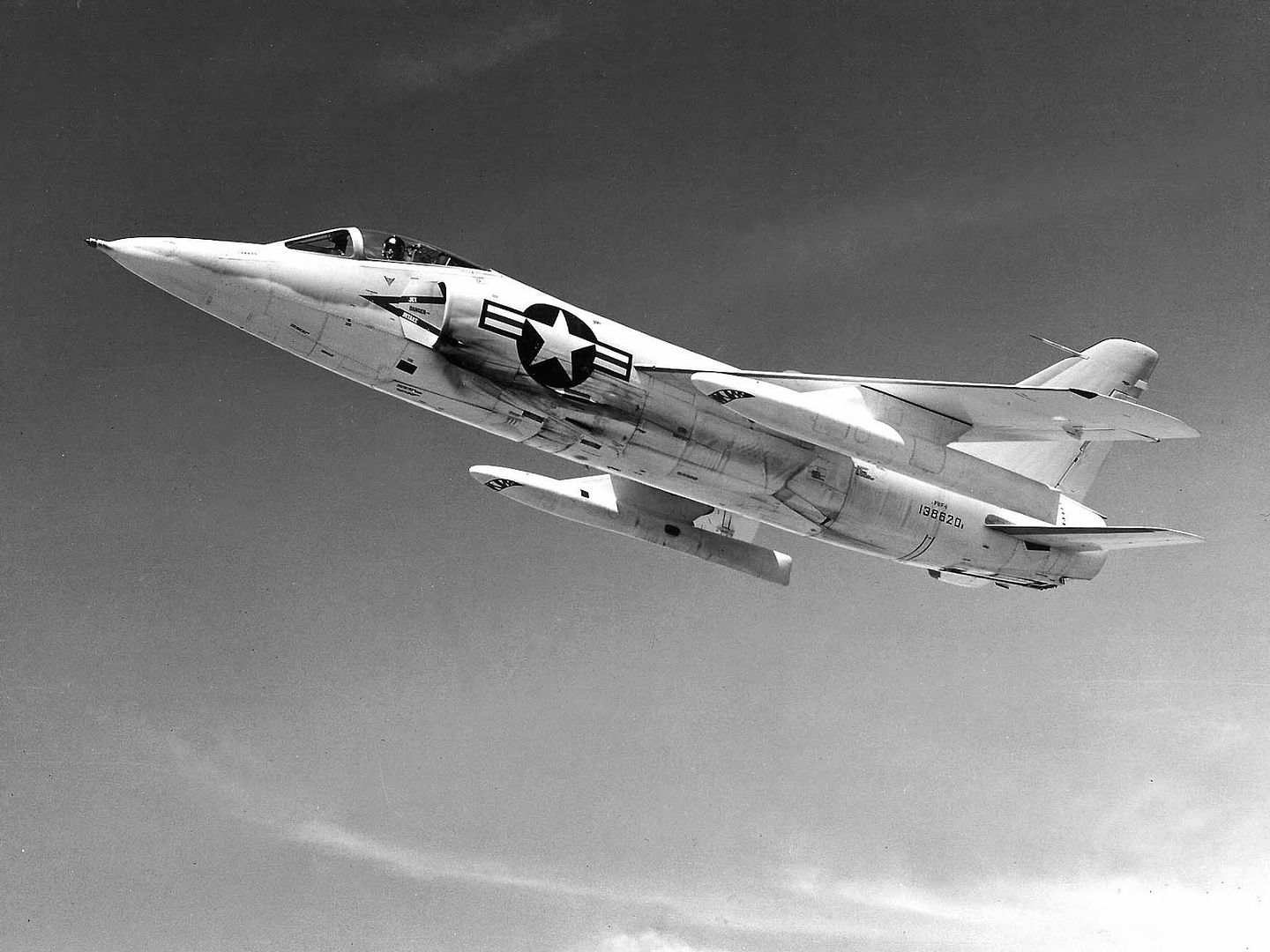
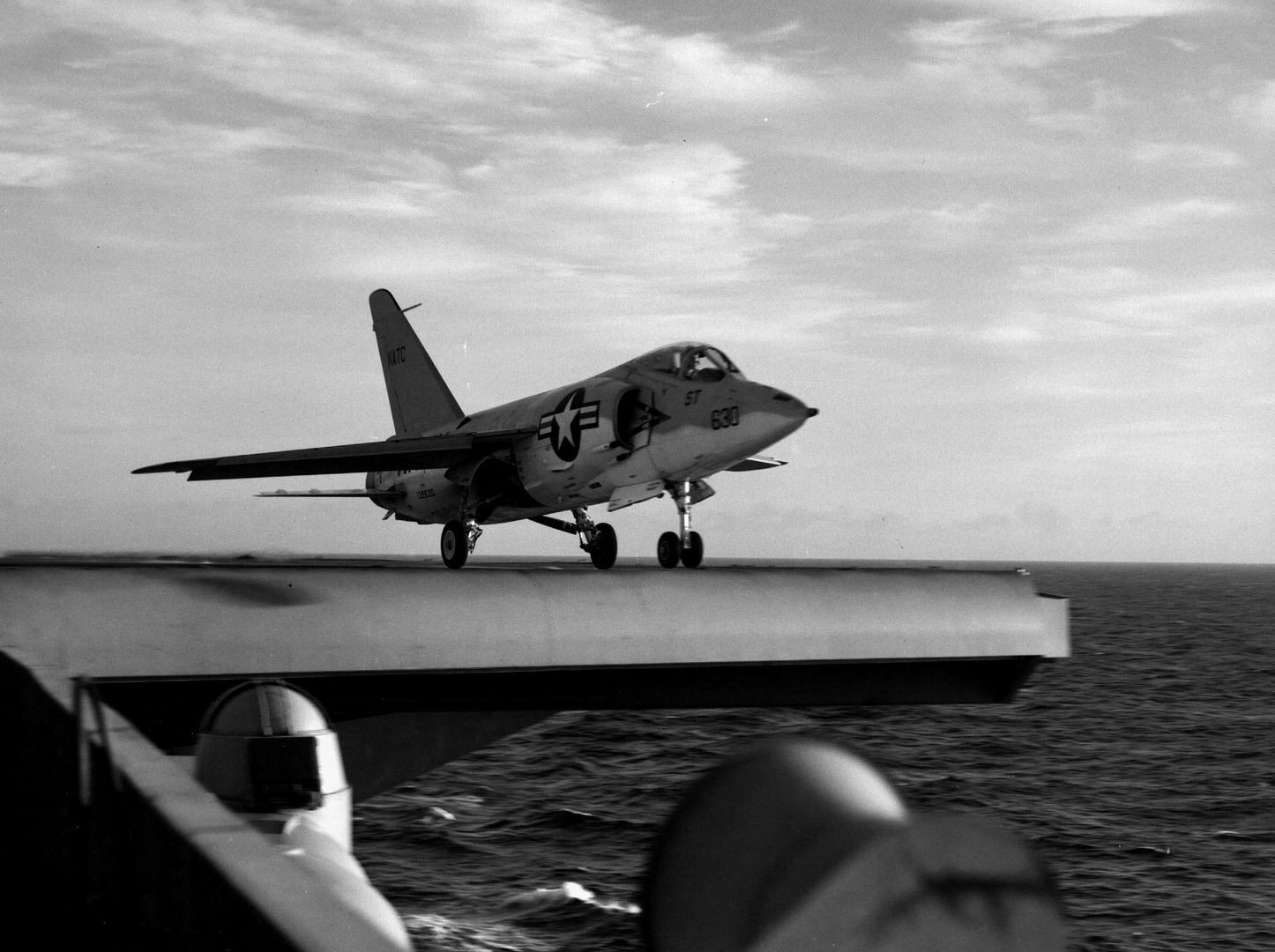
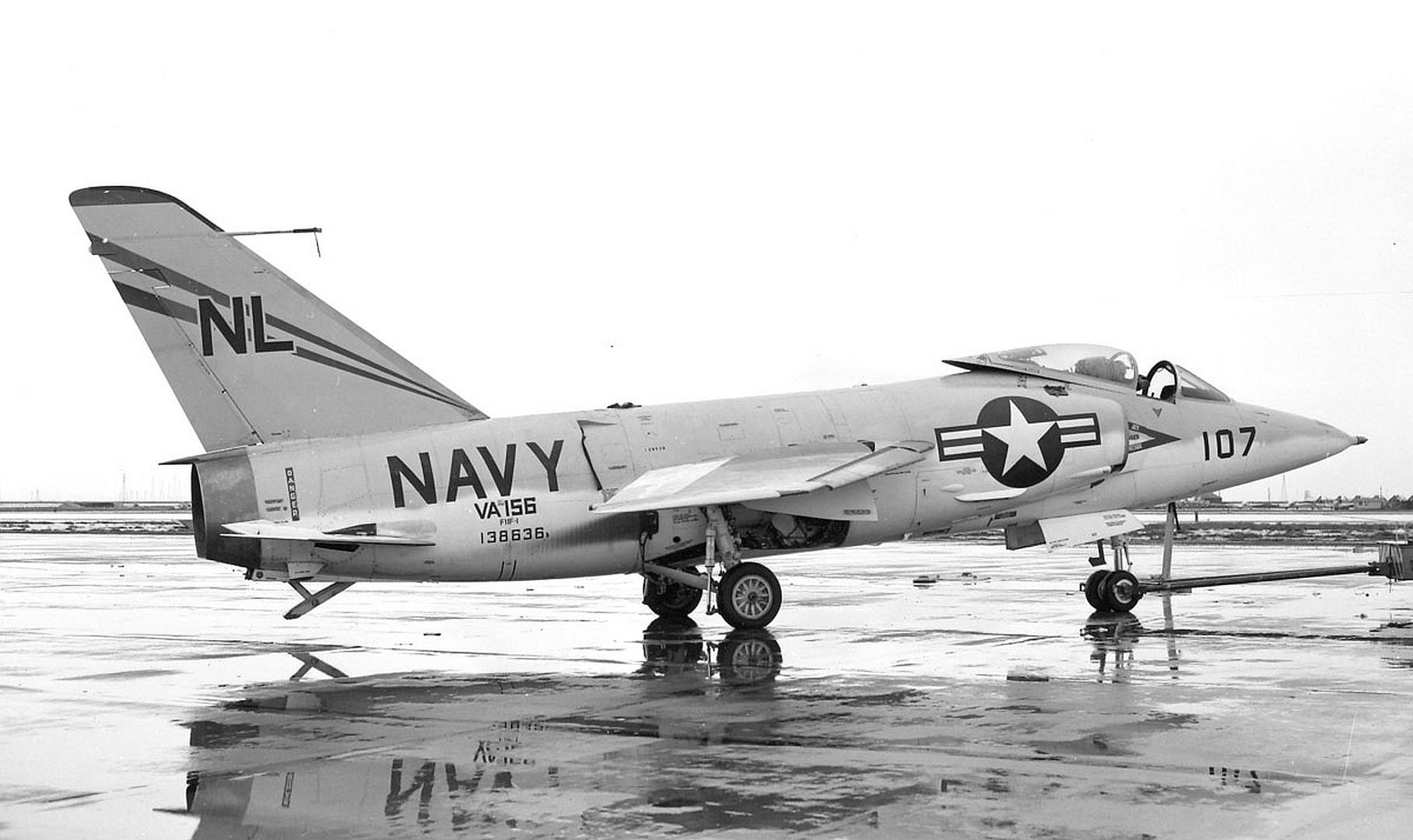
Below long nosed
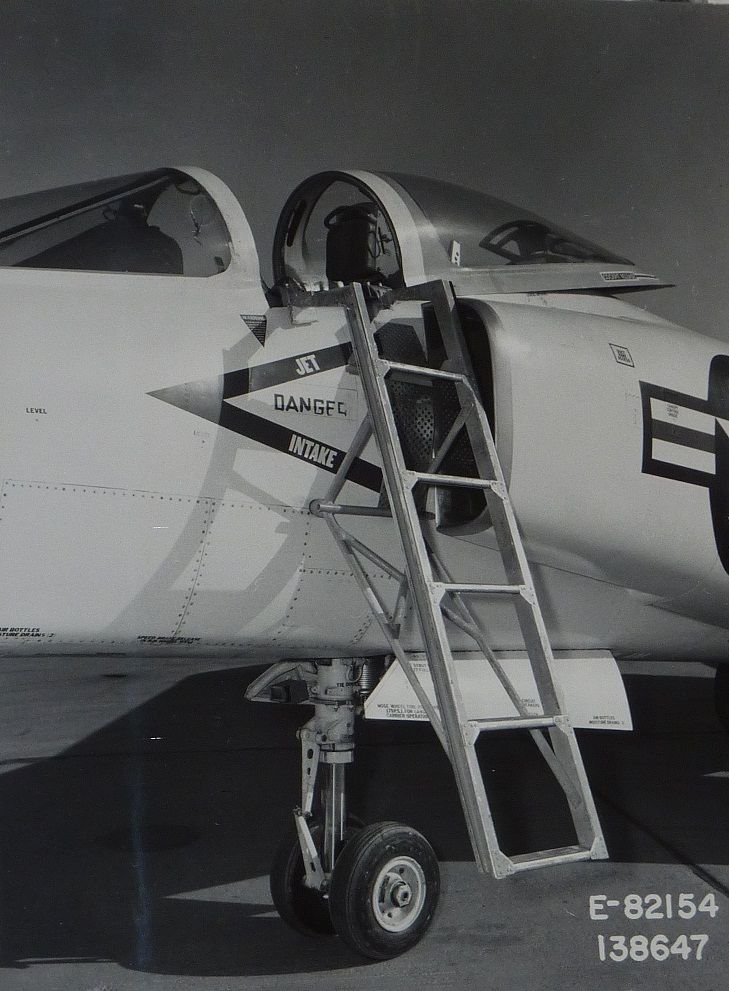
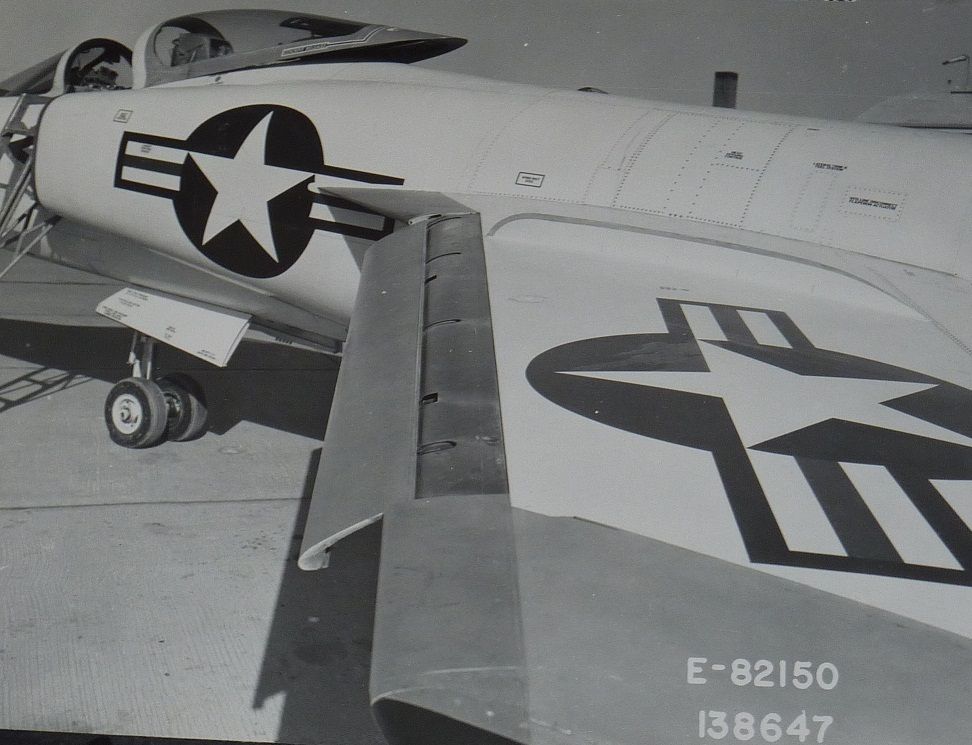

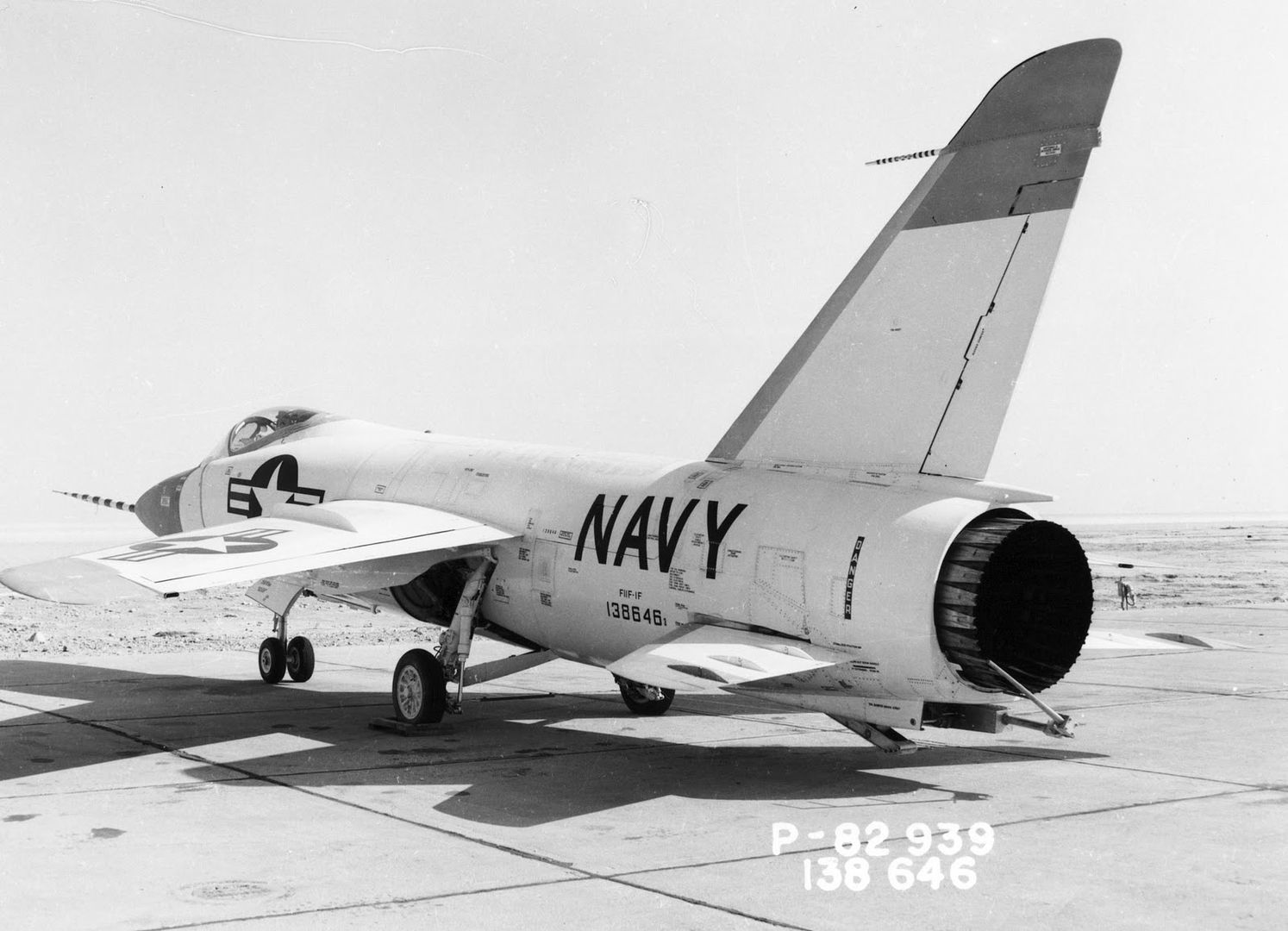

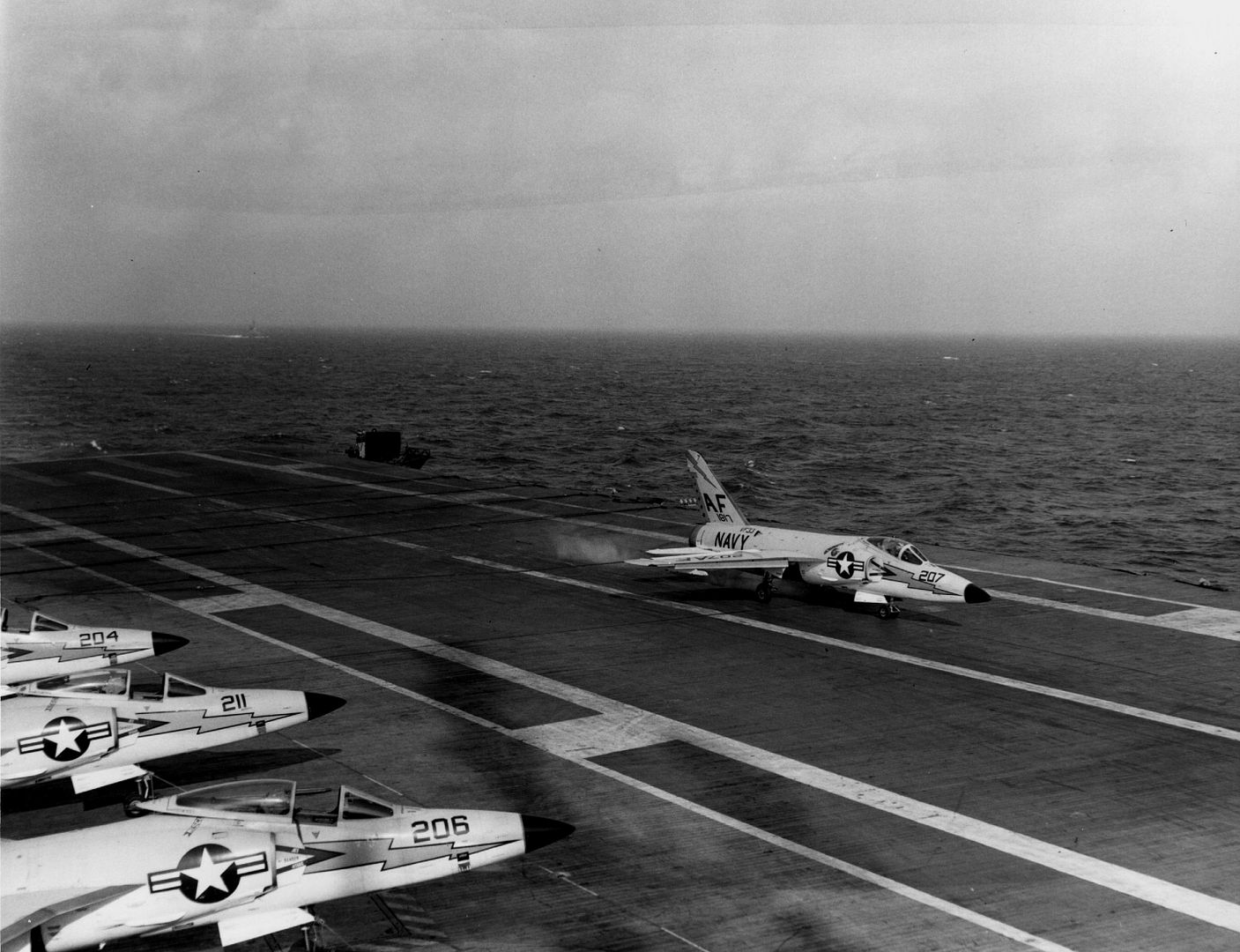
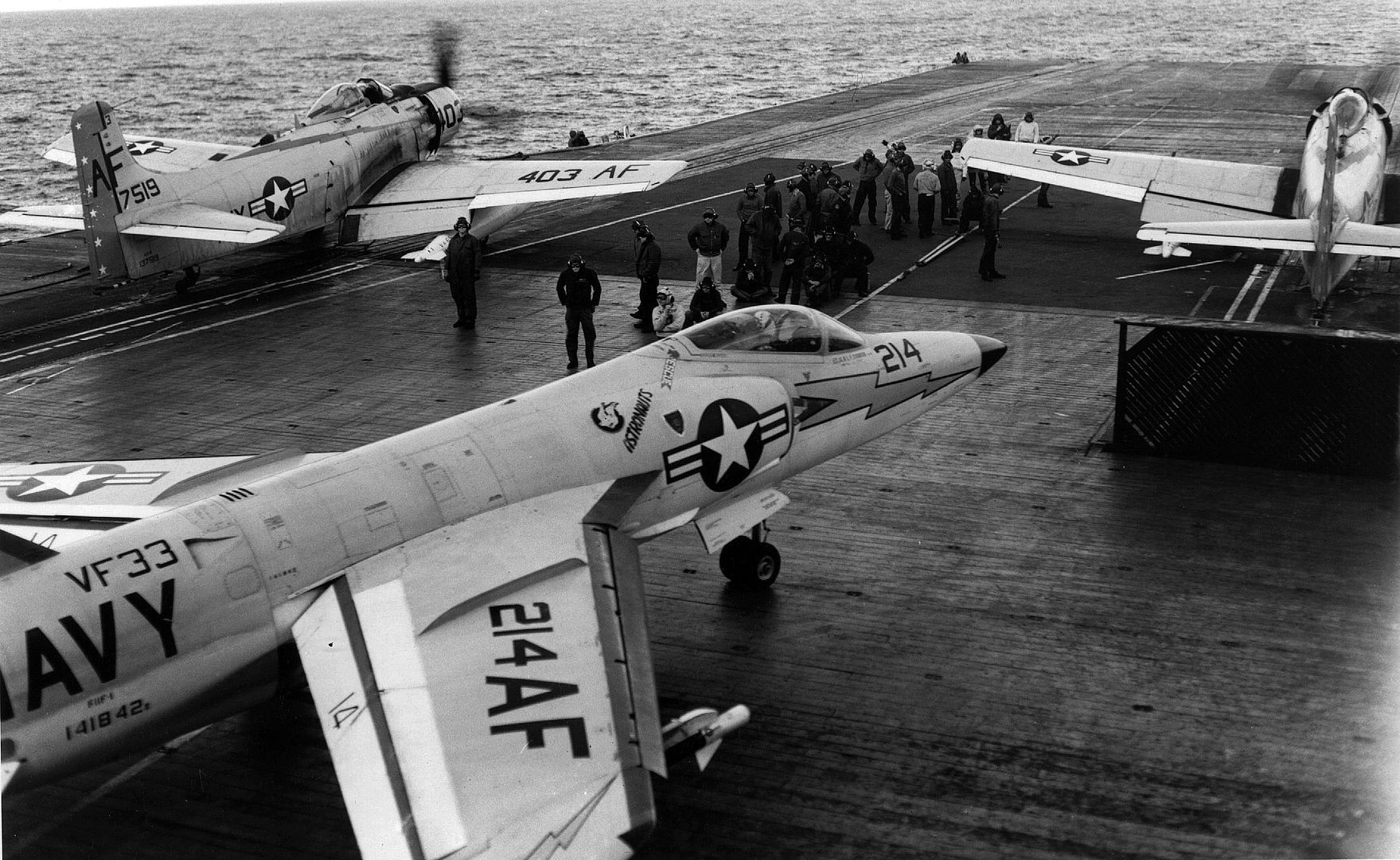
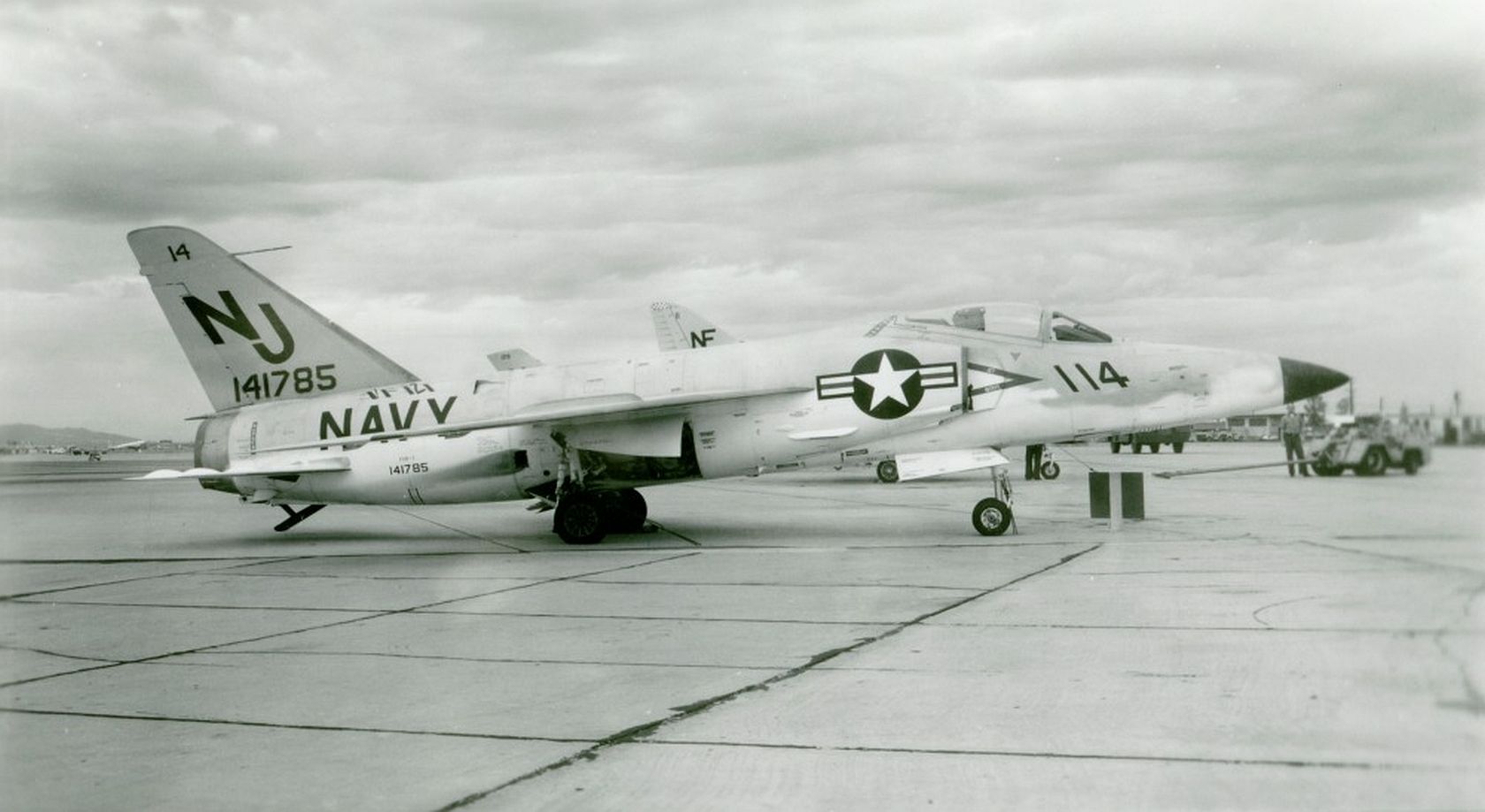
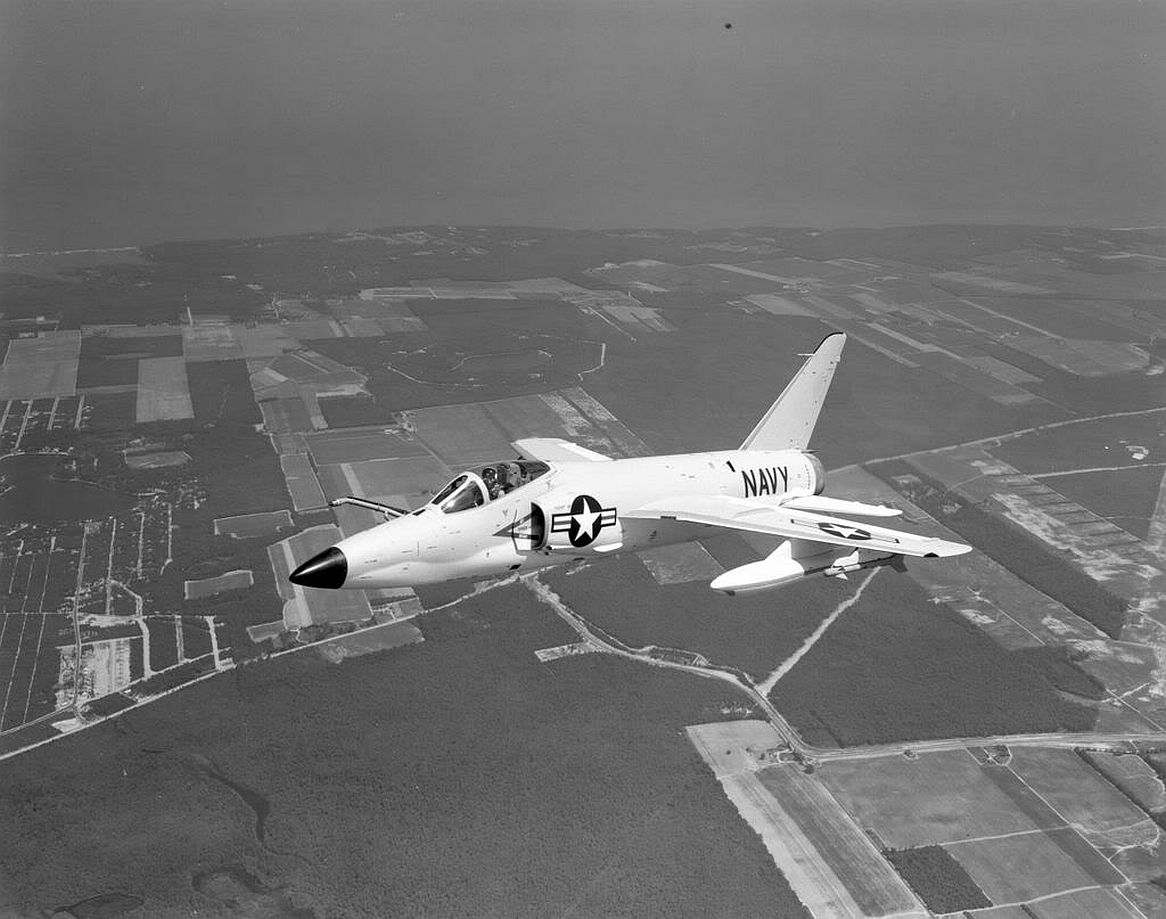
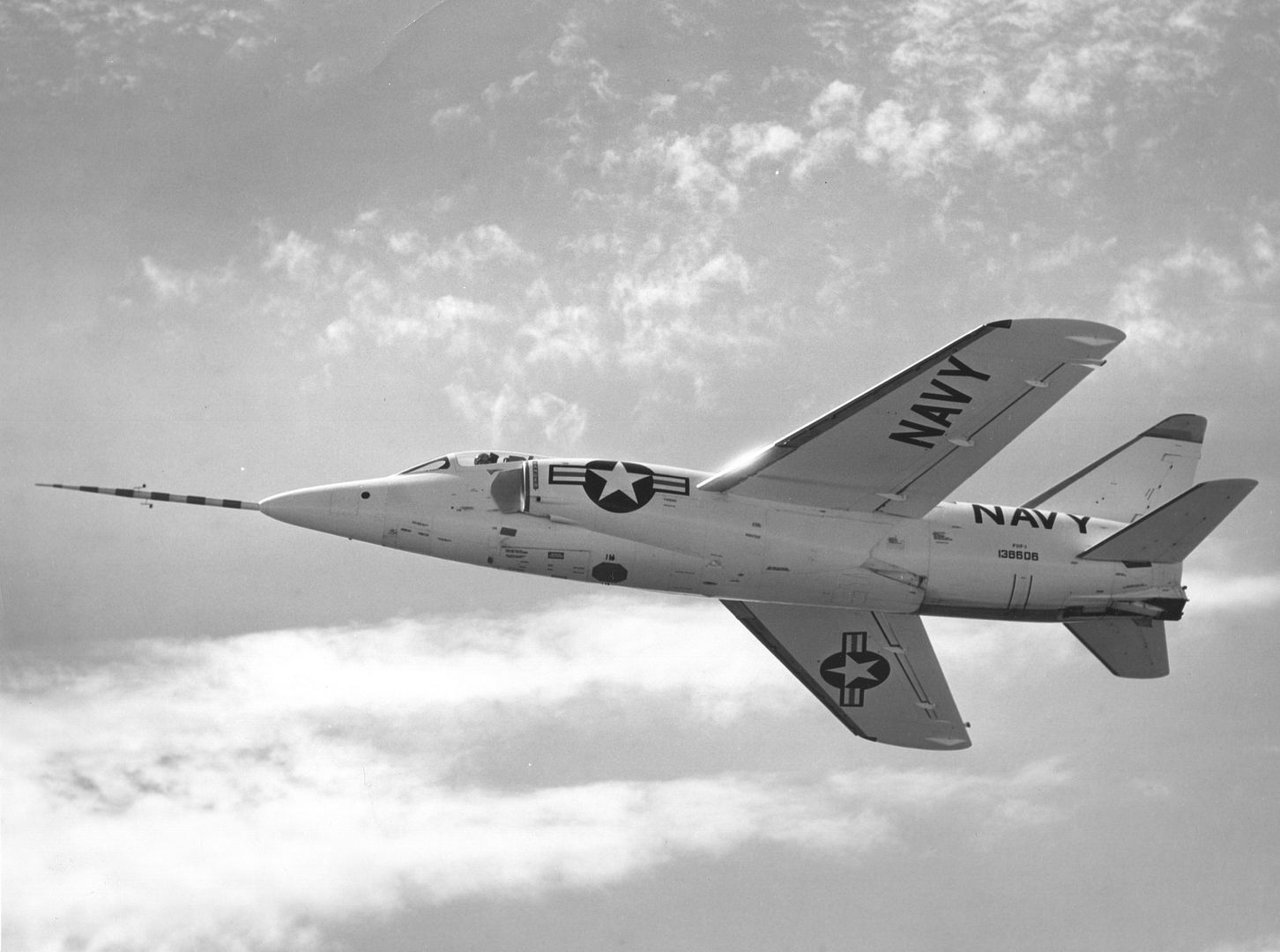



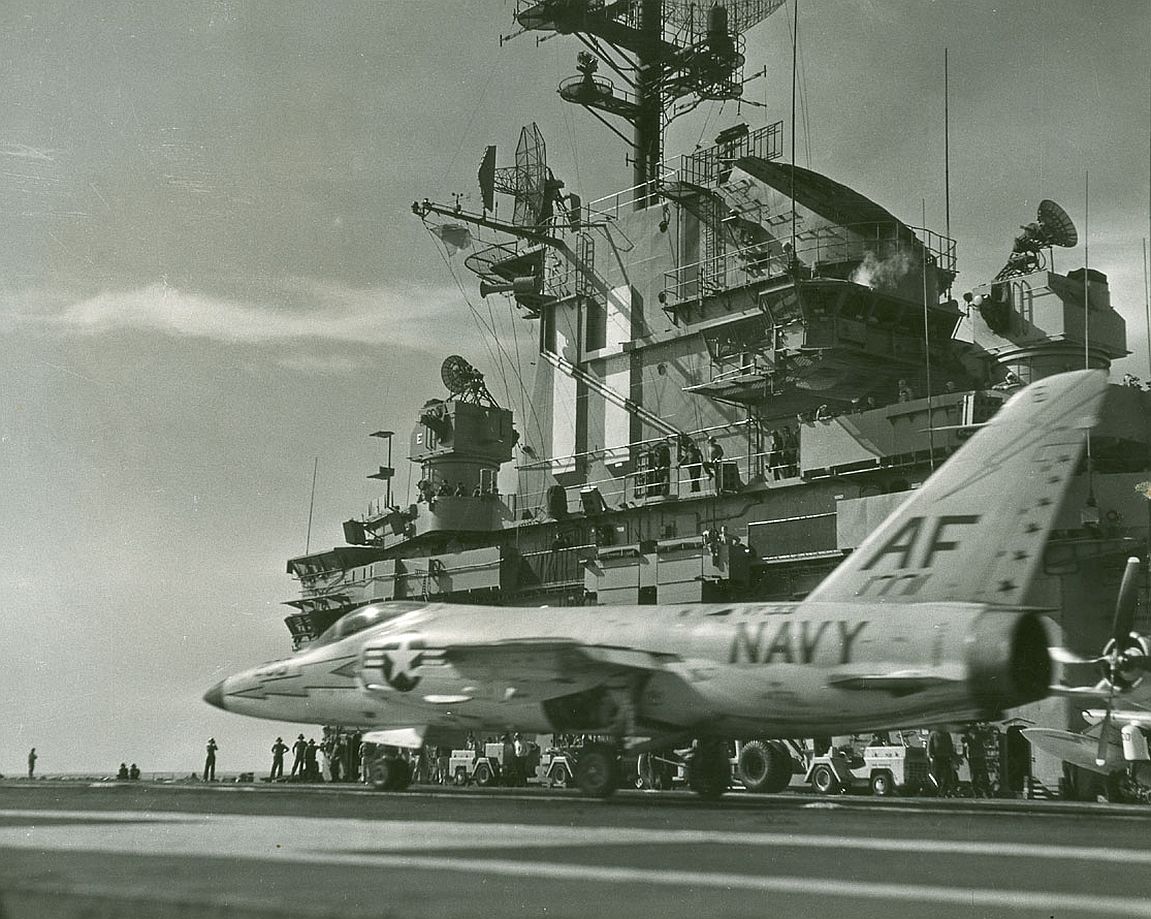


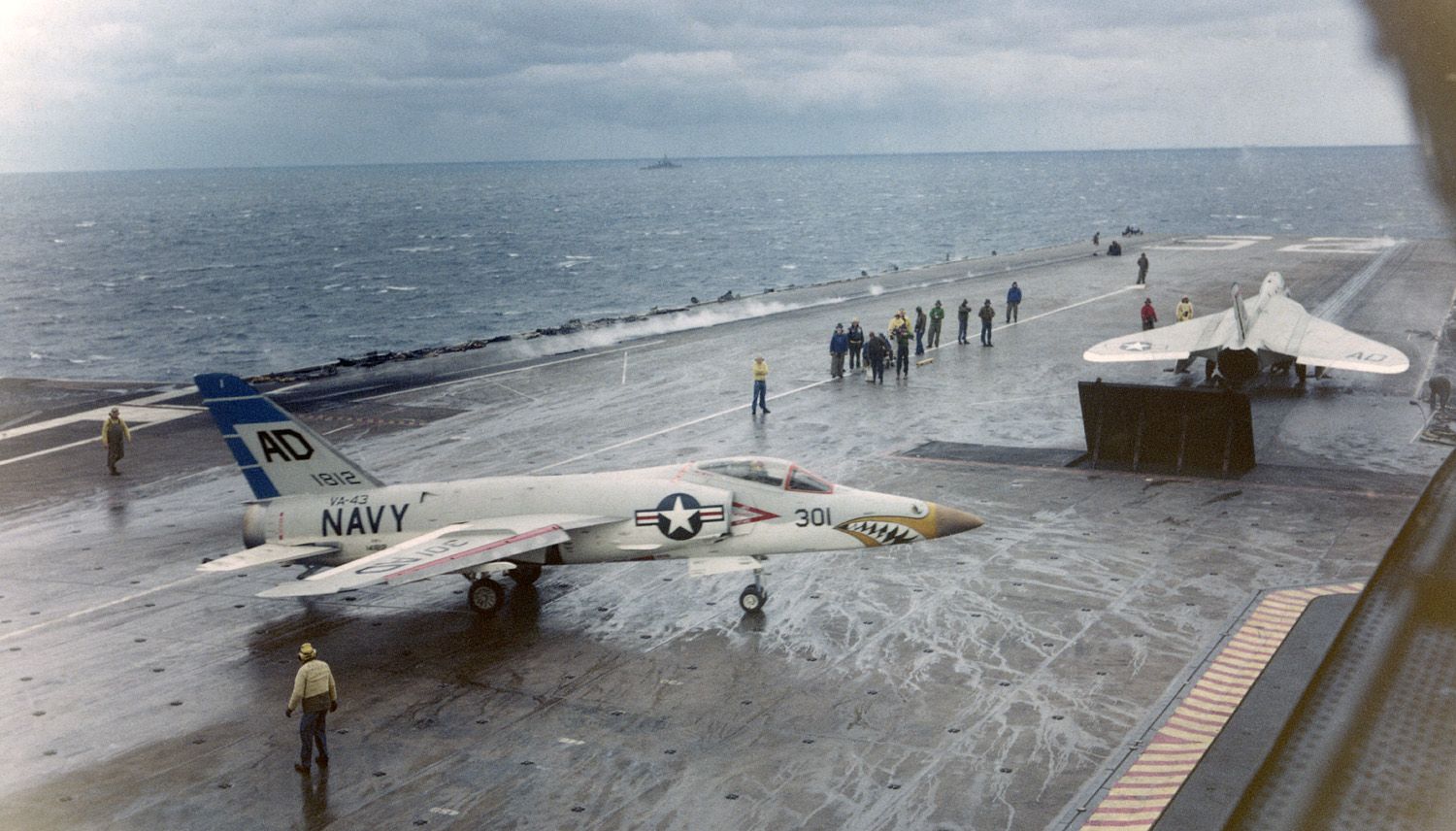
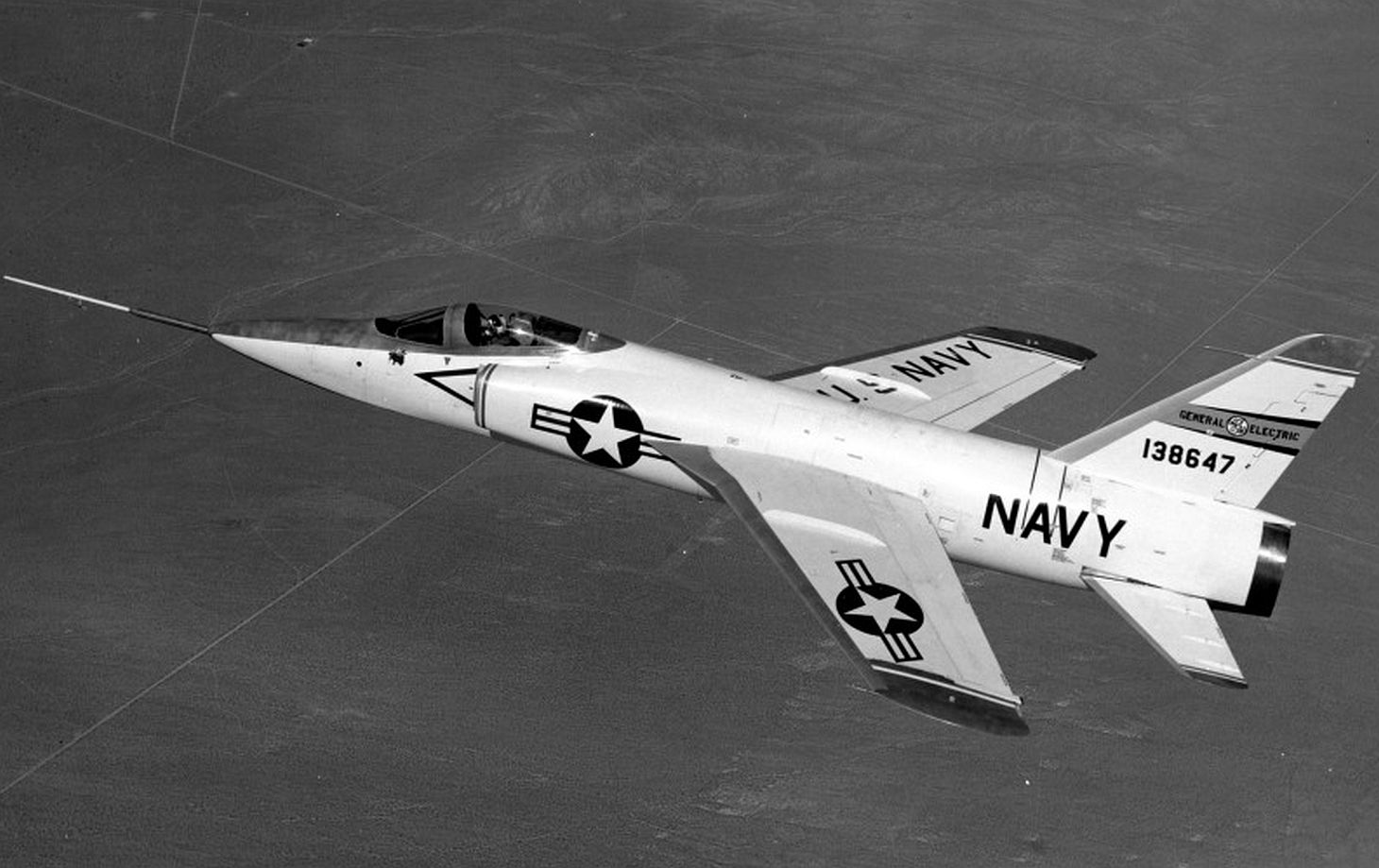

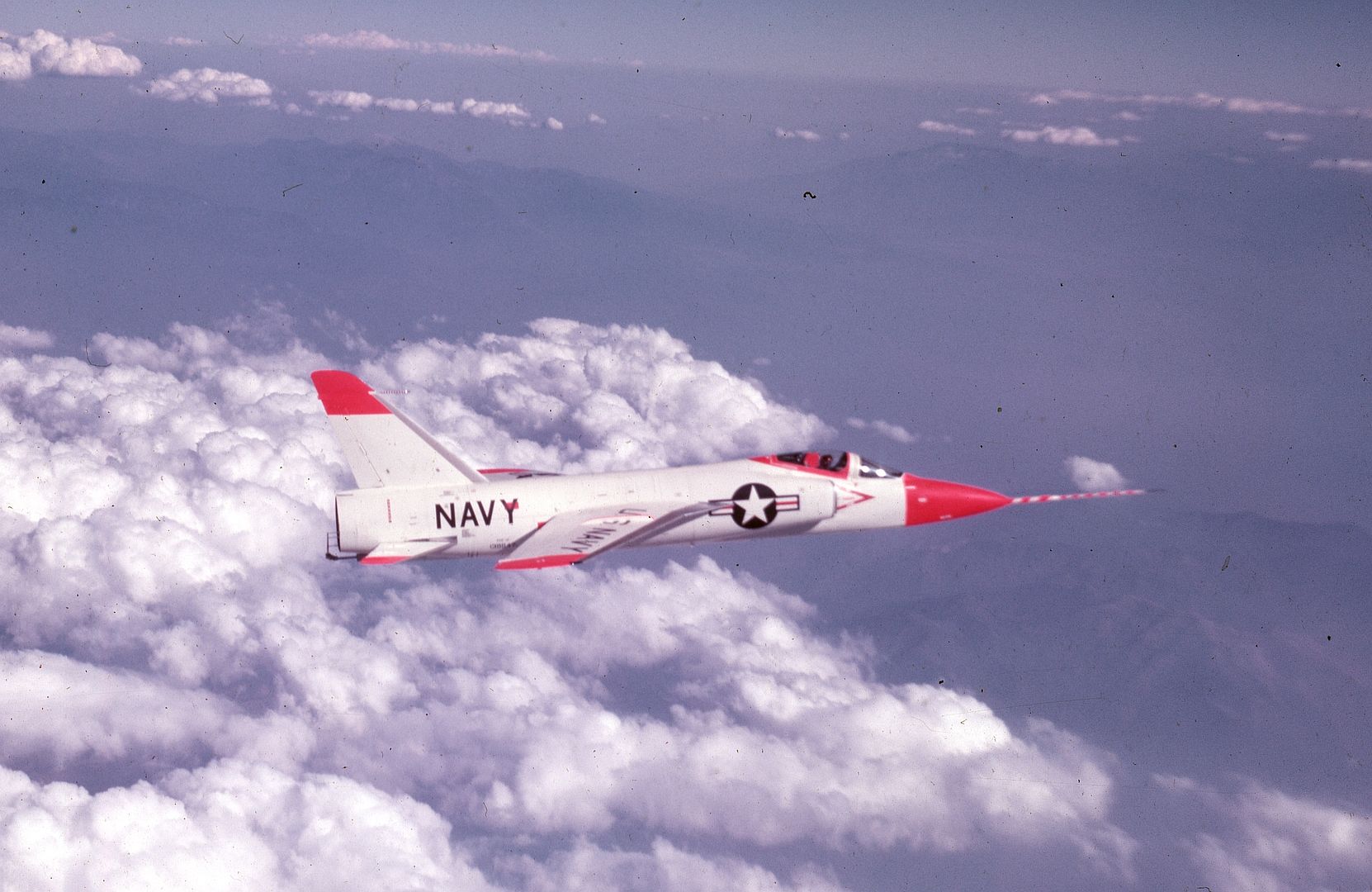
The Tiger was to become famous as the mount of the Blue Angels flight demonstration team. Short-nosed F11F-1s were first acquired by the team in April of 1957. They later traded them in for long-nosed Tigers. The team's Tigers became a staple at air shows across the nation and around the world. I remember seeing the Blue Angels Tigers in action during an airshow over Providence, Rhode Island in the mid-1960s. The Blue Angels operated their Tigers for twelve years, finally exchanging them for McDonnell F-4J Phantoms in 1969. Following their retirement, the team's Tigers were relegated to storage at Davis Monthan AFB.
In September of 1962, the F11F-1 was redesignated F-11A in accordance with the new Tri-Service designation scheme. By this time, the only Tigers left flying were those serving with training units or with the Blue Angelsflight demonstration team.
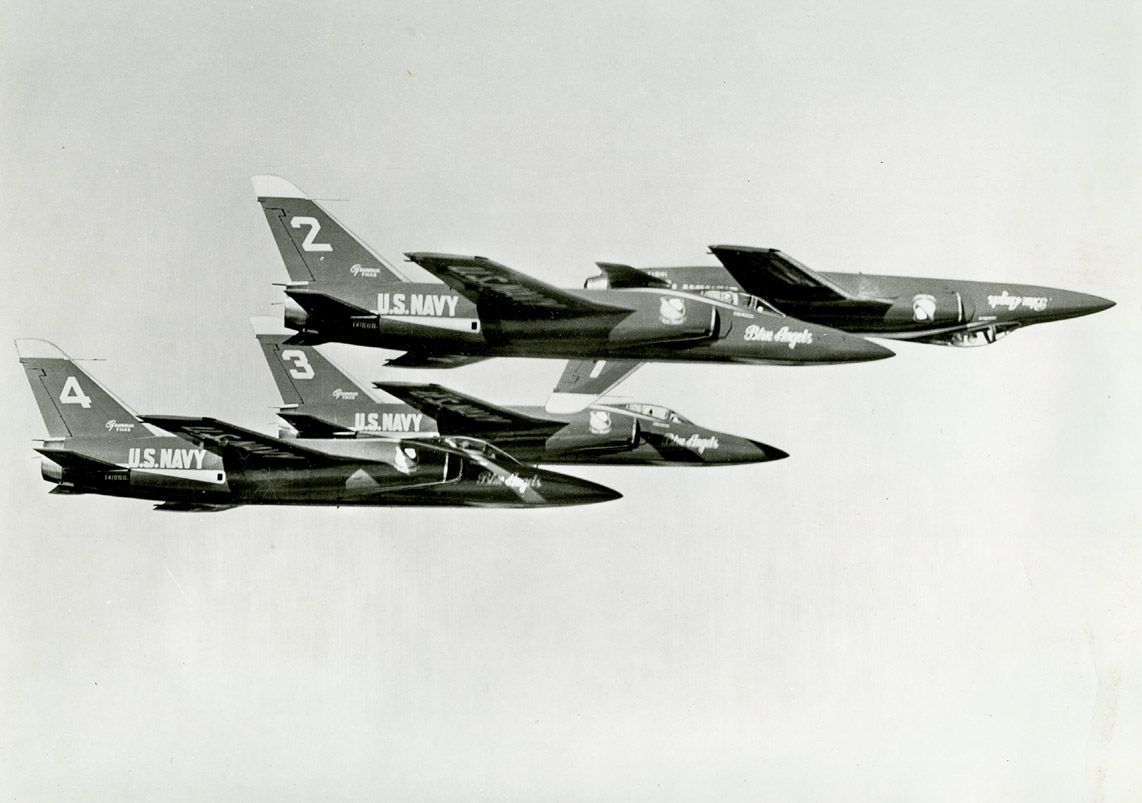
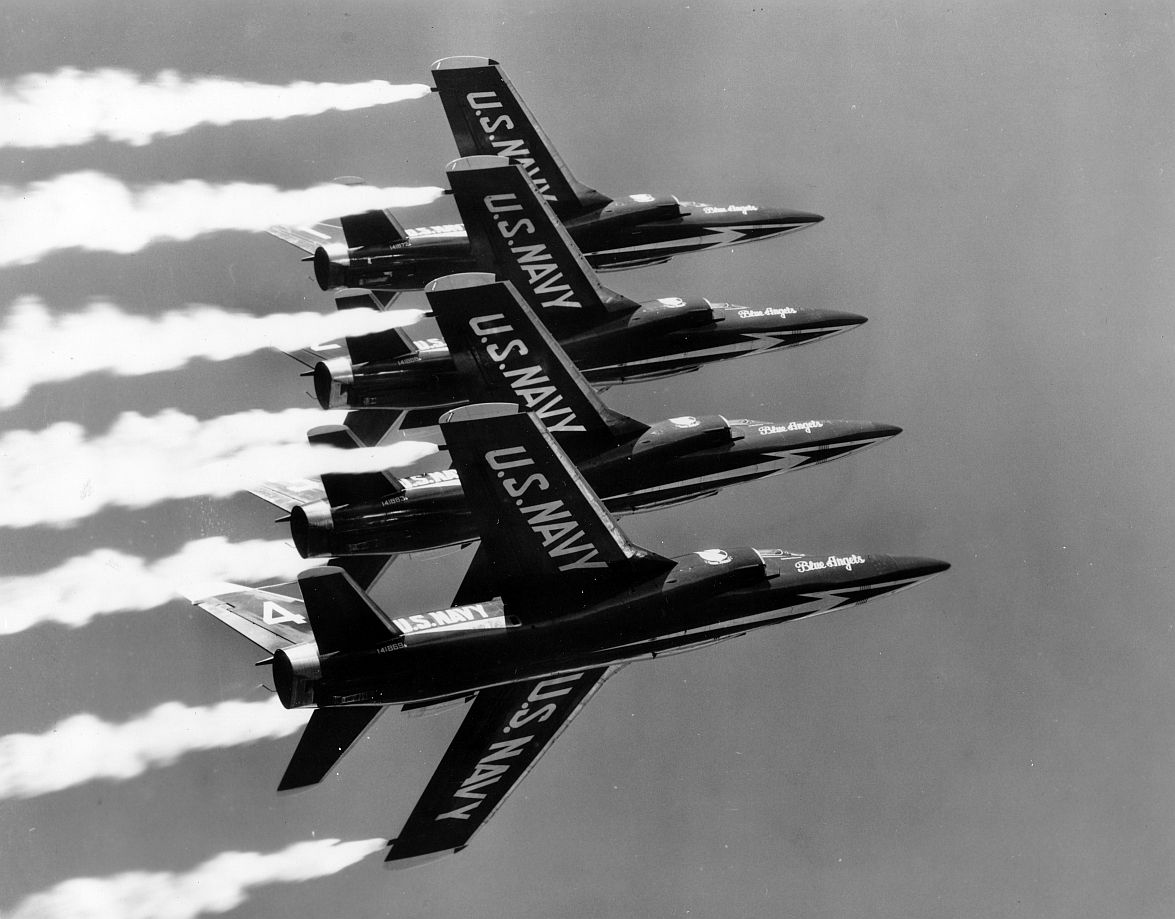
In 1973, two ex-Blue Angels F-11As were taken from storage at Davis Monthan AFB and modified by Grumman as testbeds to evaluate inflight thrust control systems. BuNo 141853 was fitted with a Rohr Industries thrust reverser and BuNo 141824 was kept in standard configuration as a chase plane. Tests of the inflight thrust reverser were carried out by Grumman at Calverton beginning in March of 1974 and were continued by the Navy at NATC Patuxent River, Maryland until 1975. Following the completion of these tests, both planes were returned to storage at Davis Monthan AFB. These were the last Tigers to fly.
Serials of Grumman F11F-1 Tiger:
138603/138608 Grumman F9F-9 Tiger
138605/138608 redesignated F11F-1 in 1955.
138609/138647 Grumman F11F-1 Tiger
138646/138647 completed as F11F-1F
140379/140413 Grumman F11F-1P Tiger - contract cancelled
141728/141884 Grumman F11F-1 Tiger
141885/141980 cancelled.
141981/141999 Grumman F11F-1P Tiger - contract cancelled.
142000/142009 Grumman F11F-1P Tiger - contract cancelled.
143232/143366 Grumman F11F-1 Tiger = contract cancelled
143367/143387 Grumman F11F-1P Tiger - contract cancelled.
Specification of the Grumman F11F-1 Tiger:
These figures refer to late production (long-nosed) F11F-1s unless otherwise specified.
Engine: One Wright J65-W-18 axial-flow turbojet, rated at 7400 lb.s.t. dry and 10,500 lb.s.t. with afterburning. Performance: Maximum speed 753 mph at sea level, 727 mph at 35,000 feet. Cruising speed 577 mph. Initial climb rate 5130 feet per minute. Service ceiling 41,900 feet. Normal range 1275 miles. Weights: 14,330 pounds empty, 21,280 pounds loaded, 24,078 pounds maximum. Dimensions: wingspan 31 feet 7 1/2 inches, length 40 feet 10 inches (early production) 46 feet 11 inches (late production), height 12 feet 9 inches (early production) 13 feet 3 inches (late production), wing area 250 square feet. Fuel capacity: 1049 US gallons maximum internal fuel capacity. Two 150-US gallon drop tanks could be carried on underwing pylons, bringing total fuel capacity to 1349 US gallons. Armament: Four 20-mm cannon in the lower edges of the air intakes. Four underwing pylons for external stores. Four AIM-9 Sidewinder infrared-homing air-to-air missiles or two Sidewinders and two 150-US gallon drop tanks could be carried on underwing racks.
As usual right click.
Post a reply
- Go to Previous topic
- Go to Next topic
- Go to Welcome
- Go to Introduce Yourself
- Go to General Discussion
- Go to Screenshots, Images and Videos
- Go to Off topic
- Go to Works in Progress
- Go to Skinning Tips / Tutorials
- Go to Skin Requests
- Go to IJAAF Library
- Go to Luftwaffe Library
- Go to RAF Library
- Go to USAAF / USN Library
- Go to Misc Library
- Go to The Ops Room
- Go to Made in Germany
- Go to Campaigns and Missions
- Go to Works in Progress
- Go to Juri's Air-Raid Shelter
- Go to Campaigns and Missions
- Go to Works in Progress
- Go to Skinpacks
- Go to External Projects Discussion
- Go to Books & Resources
